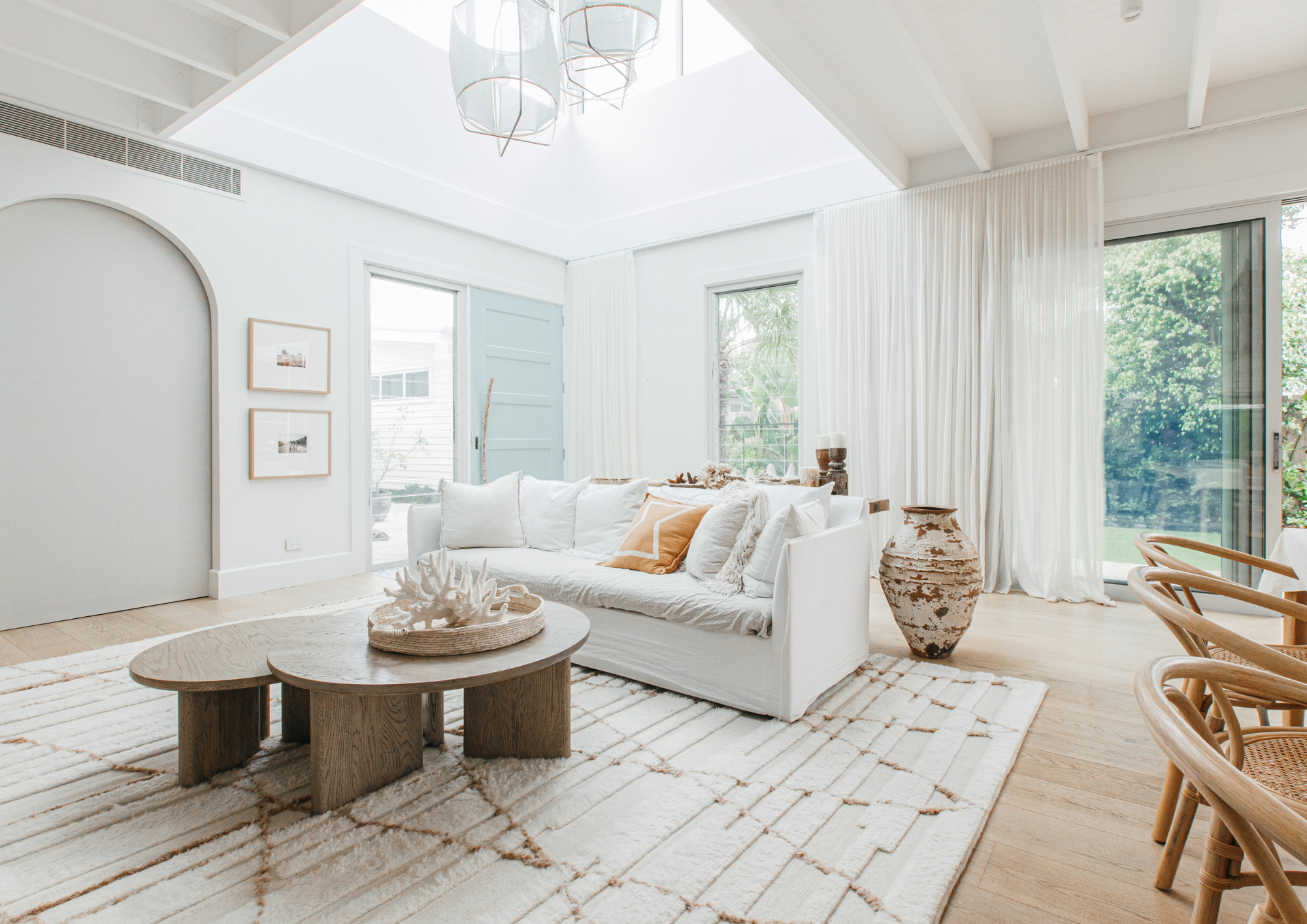
The Spellbinding Aura Of Tropical Modernism In Architecture
Tropical Modernism, an architectural style born out of the challenges and opportunities presented by tropical climates, blends modernist design principles with passive strategies, integration of indoor and outdoor spaces, and careful material selection. Key attributes include maximising natural ventilation, blurring boundaries between indoor and outdoor areas, and utilising locally sourced materials.
Understanding Tropical Modernism
Definition and Origins of Tropical Modernism
Tropical Modernism is an architectural style that emerged in the mid-20th century, primarily in regions characterised by tropical climates. The term was coined by architectural critics and historians to describe a unique approach to design that responded to the specific environmental and cultural conditions of these areas. The origins of Tropical Modernism can be traced back to the works of renowned architects such as Le Corbusier, Oscar Niemeyer, and Geoffrey Bawa.
In tropical regions, where heat, humidity, and heavy rainfall are prevalent, Tropical Modernist architecture sought to create spaces that embraced the local climate while providing comfort, functionality, and aesthetic appeal.
The design principles of Tropical Modernism were deeply rooted in the modernist movement, characterised by clean lines, open floor plans, and an emphasis on functionality. However, Tropical Modernist architects adapted these principles to suit the specific needs of tropical environments.
Key Attributes of Tropical Modernist Architecture
The key attributes of Tropical Modernist architecture reflect the marriage between modernist design principles and the demands of tropical climates. One of the most prominent features is the use of passive design strategies to maximise natural ventilation and minimise solar heat gain. This includes features such as high ceilings, large windows, and strategically placed openings to facilitate airflow.
Another important aspect is the integration of outdoor spaces with indoor living areas, blurring the boundaries between the built environment and the natural surroundings. Covered terraces, verandas, and courtyards create seamless transitions and provide shaded areas for relaxation and socialisation.
Material selection is also crucial in Tropical Modernist architecture. Architects often opted for locally sourced materials that could withstand the tropical climate, such as timber, bamboo, and natural stone. These materials, including the incorporation of a natural rug, not only contribute to the aesthetic appeal of the buildings but also offer thermal comfort and durability.
Influences on the Development of Tropical Modernism
The development of Tropical Modernism was influenced by a variety of factors, including the tropical climate itself, cultural traditions, and the works of pioneering architects. The unique climatic conditions of tropical regions necessitated architectural solutions that could mitigate heat, humidity, and heavy rainfall, leading to the emergence of this distinct style.
Additionally, the cultural context played a significant role in shaping Tropical Modernism. Local craftsmanship, vernacular building techniques, and indigenous design elements were often incorporated into the architectural designs, creating a sense of identity and rootedness in the tropical landscape.
💡KEY TAKEAWAY: Tropical Modernism combines modernist design principles with passive strategies, integration of indoor and outdoor spaces, and careful material selection to create functional, aesthetically pleasing, and climate-responsive buildings. The style's origins can be traced back to influential architects and their visionary ideas, as well as the cultural and climatic contexts of tropical regions.
Exploring the Elements of Tropical Modernist Architecture
Eco-Friendly Design and Natural Cooling Strategies
When it comes to tropical modernist architecture, eco-friendly design and natural cooling strategies take centre stage. The fusion of modern architectural principles with sustainable practices creates a harmonious relationship between the built environment and the surrounding nature. In this architectural style, emphasis is placed on minimising the ecological footprint while maximising comfort and energy efficiency.
Tropical climates are characterised by high temperatures and humidity, making it crucial to adopt strategies that naturally cool the interior spaces. Incorporating features such as ample ventilation, shaded areas, and the innovative use of materials, architects create a symbiotic relationship between indoor and outdoor environments.
Through clever design, natural airflow is maximised, promoting cross-ventilation and reducing the reliance on mechanical cooling systems.
Seamless Integration of Indoor and Outdoor Spaces
A hallmark of tropical modernist architecture is the seamless integration of indoor and outdoor spaces. The boundaries between the interior and exterior blur, creating a fluid transition that connects inhabitants with the surrounding natural beauty. Expansive windows, sliding doors, and open floor plans allow for uninterrupted views of lush landscapes and invite natural light to permeate the living areas.
By incorporating outdoor elements into the design, such as courtyards, terraces, and verandas, architects create inviting spaces that encourage a deeper connection with nature. These outdoor extensions become an integral part of the living experience, providing opportunities for relaxation, entertainment, and contemplation.
The lines between the man-made and the natural world are intentionally blurred, harmonising human habitation with the tropical environment.
Emphasis on Indigenous Materials and Local Artistry
In tropical modernist architecture, there is a strong emphasis on indigenous materials and local artistry. Architects draw inspiration from the region's cultural heritage and traditions, infusing their designs with a sense of place and authenticity. Indigenous materials such as bamboo, thatch, and local hardwoods are favoured for their sustainable properties and aesthetic appeal.
Local artisans and craftsmen play a pivotal role in the creation of tropical modernist structures. Their expertise and knowledge of traditional techniques bring a unique character and richness to the architectural elements. From intricately carved details to handwoven textiles, the incorporation of local artistry celebrates the cultural identity of the region. It creates a narrative that resonates with both the inhabitants and visitors.
💡KEY TAKEAWAY: tropical modernist architecture embraces eco-friendly design, seamless integration of indoor and outdoor spaces, and a focus on indigenous materials and local artistry. By blending sustainability, functionality, and aesthetics, this architectural style creates spaces that coexist harmoniously with the tropical environment. The result is a holistic and immersive experience that celebrates the natural beauty, cultural heritage, and craftsmanship of the region.
Iconic Examples of Tropical Modernist Architecture
Case Study 1: Exemplary Works by Geoffrey Bawa
Geoffrey Bawa, the revered Sri Lankan architect, leaves an indelible mark on the world of tropical modernist architecture. His exemplary works showcase a harmonious fusion of traditional elements and modernist principles, creating spaces seamlessly blending with their natural surroundings.
One of his notable creations is the Lunuganga Estate, a sprawling garden paradise that embodies Bawa's design philosophy. As you wander through the meticulously landscaped gardens, you'll encounter a series of interconnected pavilions, each displaying Bawa's mastery of space and light.
Case Study 2: The Brasília Cathedral by Oscar Niemeyer
Oscar Niemeyer's Brasília Cathedral stands as an iconic symbol of tropical modernist architecture in Brazil. With its hyperbolic structure and soaring, curvilinear forms, the cathedral is a testament to Niemeyer's avant-garde vision. As you step into the cavernous interior, your gaze is drawn upward towards the striking stained glass ceiling, casting vibrant hues upon the space.
The interplay of light and form creates an ethereal ambience, evoking a sense of transcendence and spiritual contemplation. Niemeyer's daring architectural approach, characterised by the use of concrete and sculptural elements, redefines the boundaries of traditional ecclesiastical design.
Case Study 3: Distinctive Houses Designed by Luis Barragán
Luis Barragán, the Mexican master of modernist architecture, leaves an enduring legacy through his distinctive houses. His works showcase meticulous attention to detail and an intuitive understanding of the interplay between light, colour, and space.
Casa Luis Barragán, his own residence and studio, serves as a prime example of his design ethos. Step inside, and you'll be greeted by a carefully choreographed interplay of light and shadow, brought to life by strategically placed openings and colourful accents. The vibrant hues of pink, blue, and yellow create a sense of joy and playfulness, while the serene courtyards offer a respite from the outside world.
Barragán's houses celebrate the beauty of simplicity, allowing residents to connect with nature and experience a profound sense of tranquillity.
💡KEY TAKEAWAY: These case studies of tropical modernist architecture by Geoffrey Bawa, Oscar Niemeyer, and Luis Barragán showcase the breathtaking fusion of tradition and innovation. Each structure invites contemplation, ignites the imagination, and reflects the genius of its creator. These examples remind us of the power of architecture to evoke emotions, shape experiences, and transform the way we perceive the world around us.
Creating a Tropical Modernist Haven: Design Tips
Harnessing Natural Light and Optimal Airflow
When designing your tropical modernist haven, one of the key elements to consider is how to harness natural light and optimise airflow.
To maximise natural light, incorporate large windows or floor-to-ceiling glass panels that allow the sun's rays to flood your space. Avoid heavy curtains or blinds that obstruct the light; instead, opt for sheer fabrics or light-coloured window treatments that gently diffuse the sunlight, creating a soft and ethereal ambience.
Incorporating Flourishing Foliage and Landscape Design
To infuse your tropical modernist haven with the vibrant beauty of nature, incorporate flourishing foliage and thoughtful landscape design.
Choose native tropical plants that thrive in your specific region, as they are better adapted to the local climate and require less maintenance. Play with different textures, shapes, and heights to create visual interest and depth. Introduce potted plants or vertical gardens to optimise space and bring nature indoors.
Achieving a Delicate Balance between Seclusion and Openness
In a tropical modernist haven, achieving a delicate balance between seclusion and openness is paramount. You want to create spaces that offer both privacy and a connection to the surrounding environment, allowing you to unwind while still embracing the natural beauty that surrounds you.
Consider designing private retreats within your home, such as cosy reading corners, intimate courtyards, or secluded outdoor lounges. Utilise architectural features like screens or louvres to provide privacy without completely blocking the views or natural light. These elements will create a sense of sanctuary while still allowing you to enjoy the tropical vistas.
On the other hand, prioritise open and airy spaces that seamlessly flow from indoors to outdoors. This can be achieved through the strategic placement of large sliding doors or the elimination of physical barriers between interior and exterior areas. The goal is to create a seamless transition that blurs the boundaries, allowing you to fully embrace the tropical surroundings and embrace the indoor-outdoor lifestyle.
💡KEY TAKEAWAY: When designing your tropical modernist haven, harnessing natural light and optimising airflow, incorporating flourishing foliage and thoughtful landscape design, and achieving a delicate balance between seclusion and openness are essential. Embrace the sunlight and breezes, bring nature indoors, and create spaces that offer both privacy and a connection to the surrounding environment.
By carefully considering these design tips, you can craft a harmonious sanctuary that embraces the beauty of the tropics while reflecting your personal style and taste.
Embracing Tropical Modernism: Harmonious Living with Nature
Promoting Well-being and Connectivity through Biophilic Design
In the realm of tropical modernism, the concept of biophilic design takes centre stage, weaving together nature and architecture to create spaces that nurture the well-being of its occupants. Embracing this design philosophy means recognising the innate human connection to nature and integrating it harmoniously into the built environment.
The biophilic design strives to bring the outside in, fostering a sense of tranquillity and serenity through the use of natural elements. Picture yourself in a living room bathed in soft natural light, surrounded by lush greenery, and hearing the gentle rustling of leaves. Such spaces, abundant with plants and daylight, have a profound impact on your well-being, promoting relaxation, reducing stress levels, and improving cognitive function.
Environmentally Conscious Practices and Energy Efficiency
In the pursuit of harmonious living with nature, tropical modernism emphasises environmentally conscious practices and energy efficiency.
Imagine living in a home powered by solar energy, with rainwater harvesting systems that nourish the surrounding gardens. By harnessing abundant sunlight and conserving water, tropical modernism not only reduces your ecological footprint but also invites you to actively participate in sustainable living.
Designing for Adaptability in Tropical Climates
Tropical climates bring their unique set of challenges, characterised by high humidity, intense heat, and frequent rain. Tropical modernism addresses these conditions through thoughtful and adaptable design, ensuring a comfortable and resilient living environment.
Flexible and open floor plans allow for natural airflow, dissipating heat and reducing the need for artificial cooling. Ample windows and strategic shading devices let in natural light while minimising direct sun exposure, balancing illumination with thermal comfort.
💡KEY TAKEAWAY: Tropical modernism embraces biophilic design to promote well-being and connectivity with nature. By incorporating natural elements, such as plants and daylight, and utilising sustainable materials, it creates spaces that foster relaxation and reduce stress.
At Miss Amara, we believe that your home deserves a touch of elegance and warmth. We're dedicated to curating a collection of high-quality rugs that can transform your space and reflect your unique style. With our wide range of styles, sizes, and materials, we make it easy for you to find the perfect rug that adds texture, personality, and a sense of harmony to every room.


















